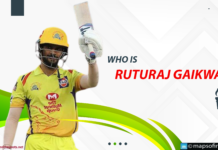The Champions League Twenty20 2013 came to an end yesterday with a glittering final in the heart of India – Delhi. It was a fitting finale for two of the champions of the world game – Rahul Dravid, who was playing his last game in any format of cricket, and Sachin Tendulkar, who was playing his final T20 game. The match saw a pulsating finish with Rajasthan Royals running Mumbai Indians close – they may even have lifted the trophy had it not been for Harbhajan, who snatched four wickets in the most important match of the championship. All in all, the tournament was perhaps a success from an organizational and financial point of view but can we say that it grabbed popular attention?
Why were the stands empty? This has to be the first question that the organizers need to ask themselves. As I have stated previously in the blog on how to make the Champions League T20 better, the Indian audiences are not bothered about a cricket match–certainly not one being played by domestic T20 teams from different countries–if it does not involve an Indian team. Many people may also point to the price of the tickets, but that would be a flimsy argument in my opinion as most Indians do not care about money if it’s a cricket match, a concert or a film of their favourite star such as Shah Rukh Khan.
Were there any new stars? The previous CLT20 tournaments have made the careers of players like Kieron Pollard, Davy Jacobs and Sunil Narine, to name a few. The players that have performed well in T20 have managed to carve successful careers. This tournament also unveiled Praveen Tambe. From what I have heard, he has been a consistent performer in local and office cricket in Mumbai without ever breaking into the Mumbai team.
The Mumbai Ranji team is short of spinners this season, with the departure of Harmeet Singh to Vidarbha, Ramesh Powar to Rajasthan and the banning of Ankeet Chavan. So there is a good chance that Tambe might break into the Ranji team after all. He sure looks a good bowler from the way he performed for Rajasthan Royals to pick up the Golden Wicket in an event of this stature. However, I am not sure if he will get a call up to the Indian team.
Performance of Indian teams: From the look of things it seems that the CLT20 is organized every other year in India to make sure that at least one team from the IPL makes it to the final and preferably wins it. With the exception of New South Wales, who later played in Sidney Sixers in the previous edition of the tournament, no team has won this tournament from outside India. Similarly, CSK is the only IPL team to have won this tournament in South Africa, which has been the only other venue to have hosted this CLT20.
This pattern was repeated in this year’s tournament as well, with three semi-finalists coming from IPL. If Deccan Chargers had luck going their way, then we would have been treated to the spectacle of an all-IPL semi-final and that would have been a bit too much to digest! The international teams, with the exception of Trinidad & Tobago, fell by the wayside and that perhaps was expected but still not very much appreciable. This sort of predictability is boring and takes away the very essence of cricket.
Low levels of audience interest: I am a cricket buff and normally follow as many games as I can but this year I was least bothered about the tournament. If this can happen with me, just imagine the plight of people who only follow India’s games and the IPL. Frankly, there is plenty of cricket being played in India and the IPL is way more competitive than CLT20. The ICC or the owners of this tournament need to look into this saturation factor and take necessary steps if the tournament has to do well, with the exceptions of the final and the semi-finals. If they continue to take their position for granted, one day they may have to buy the audience to fill the turnstiles.




